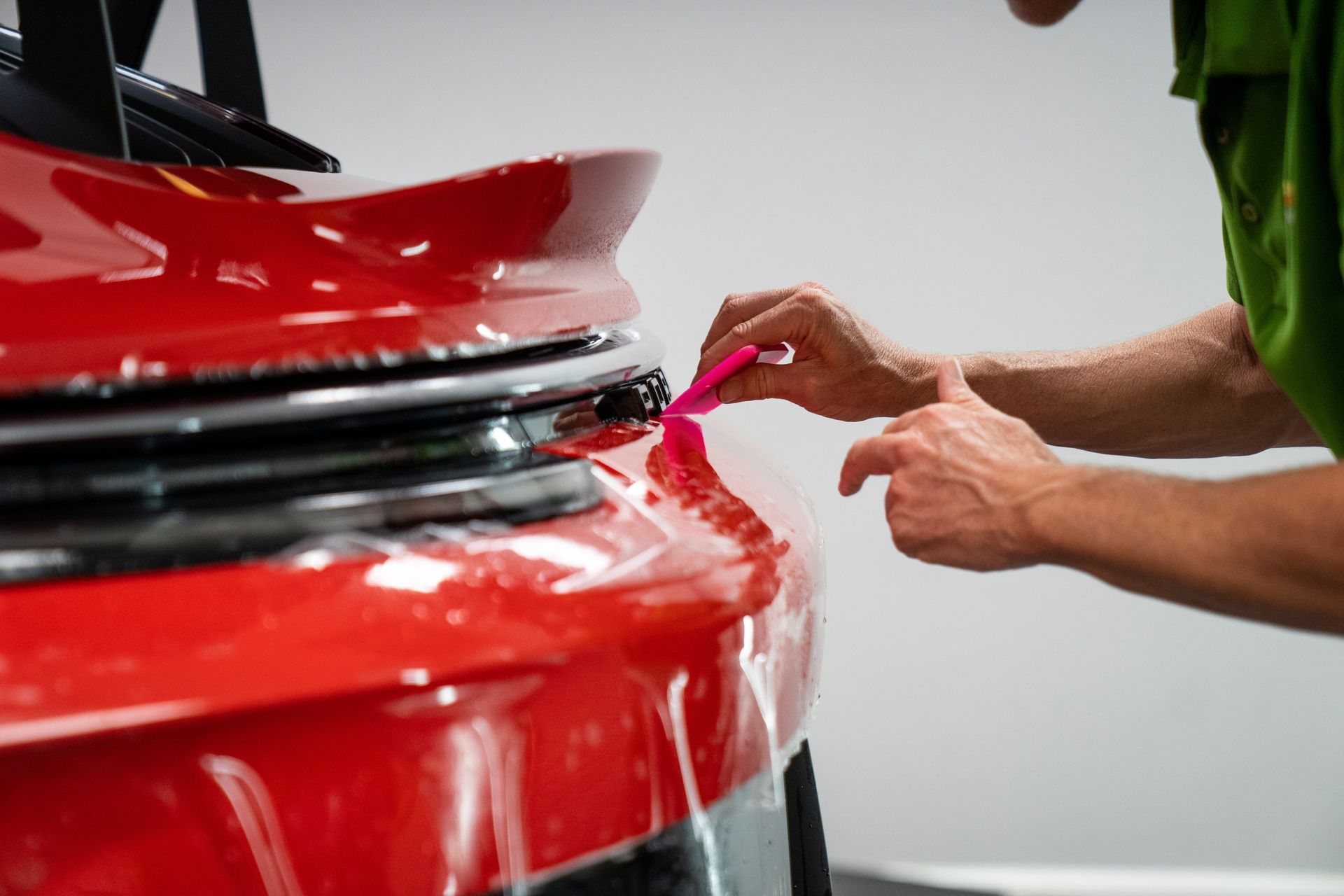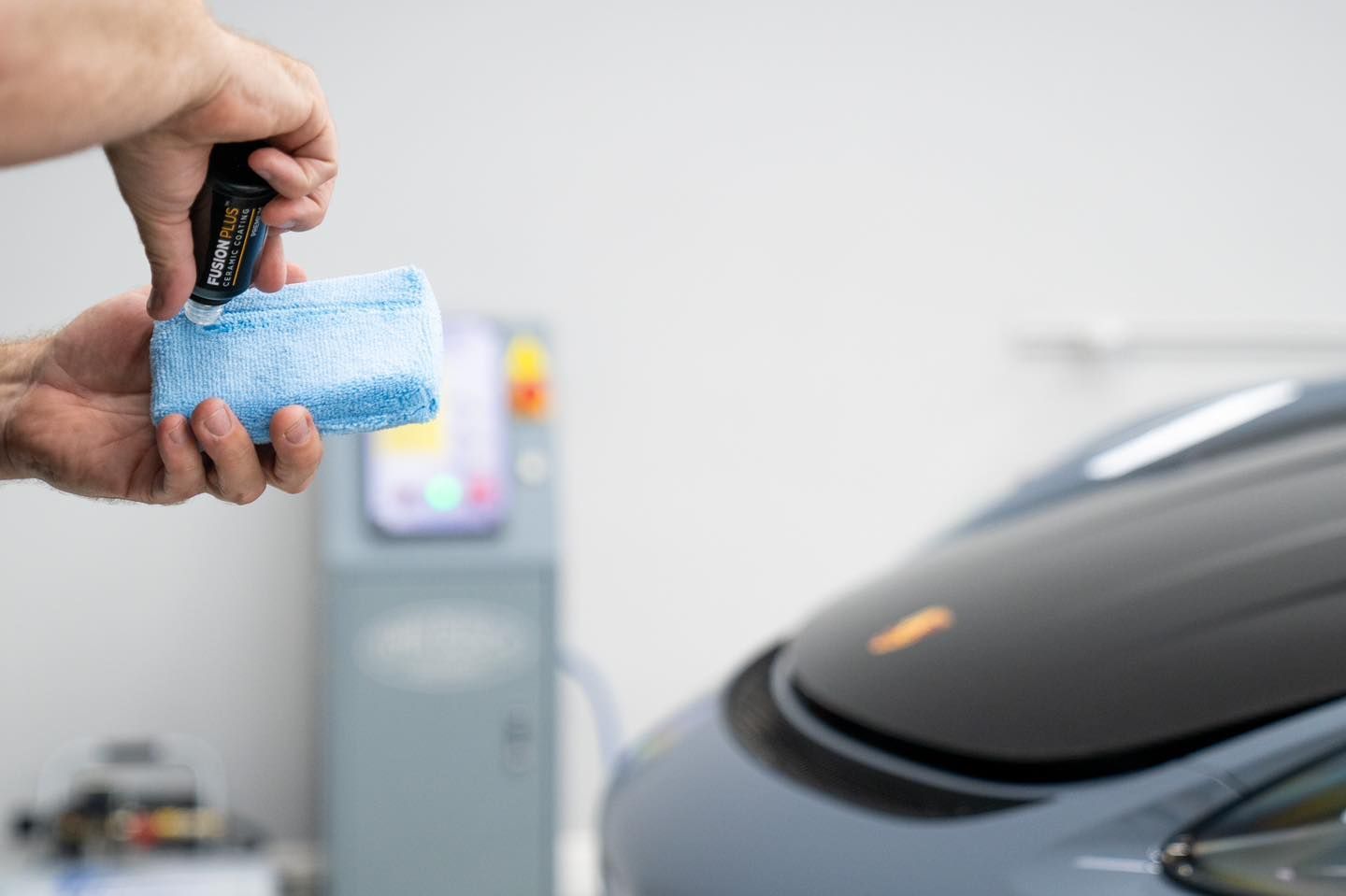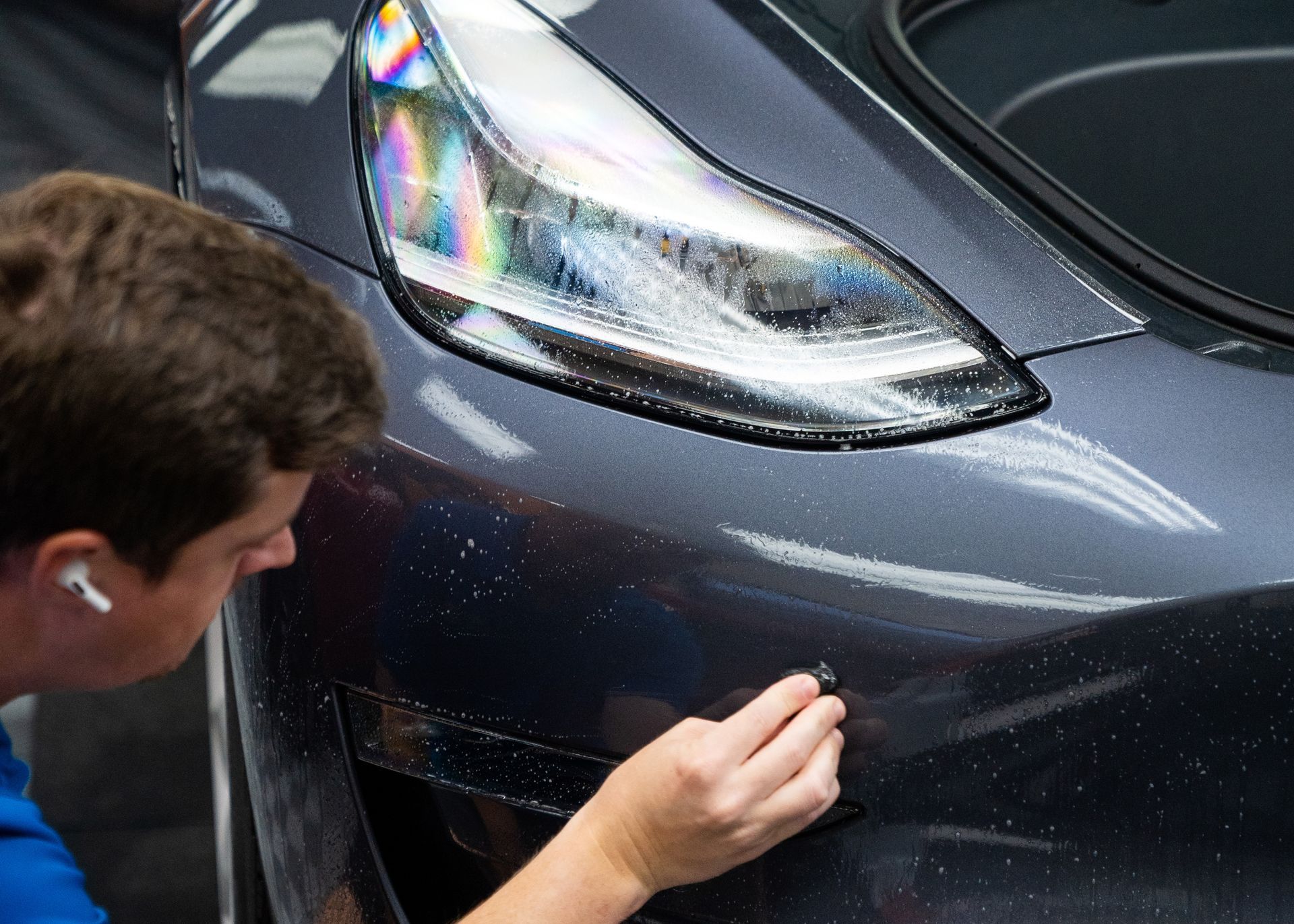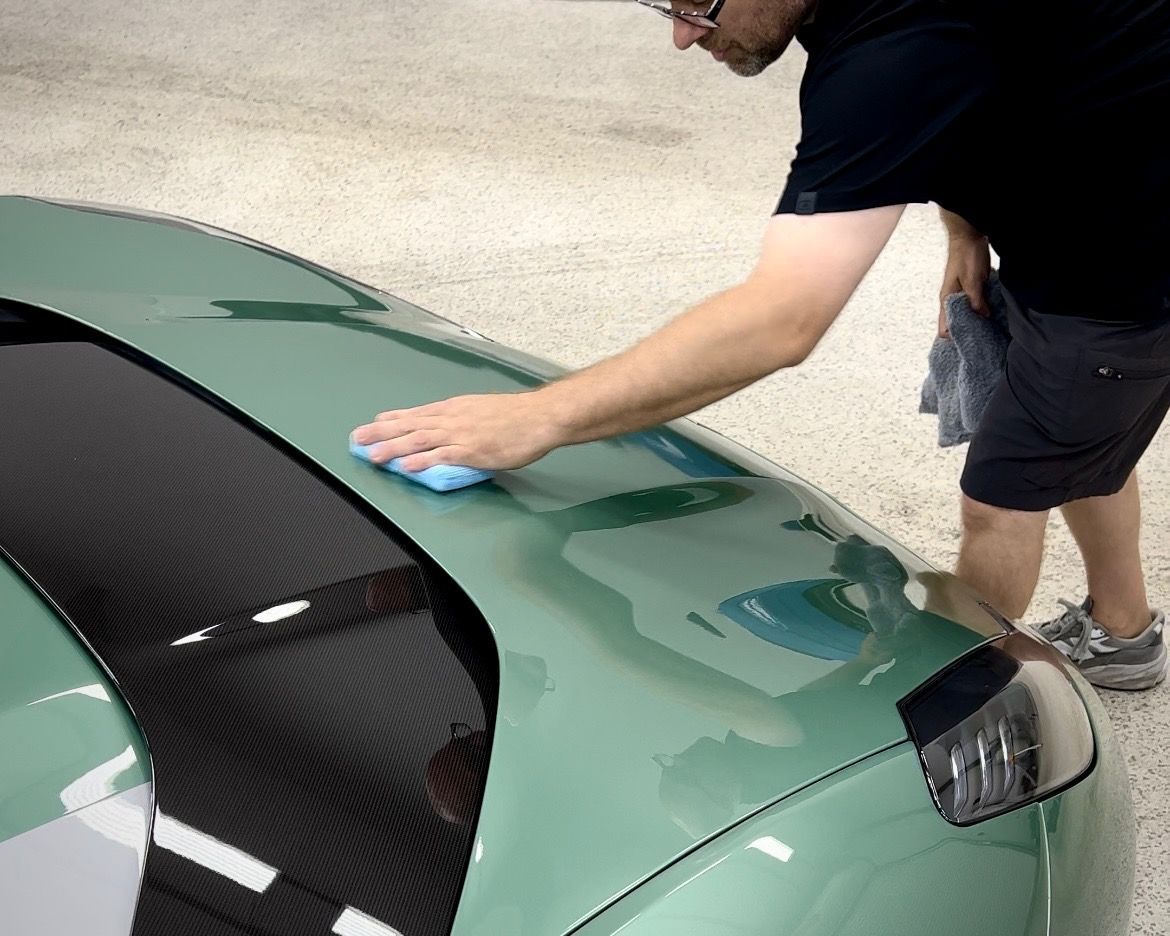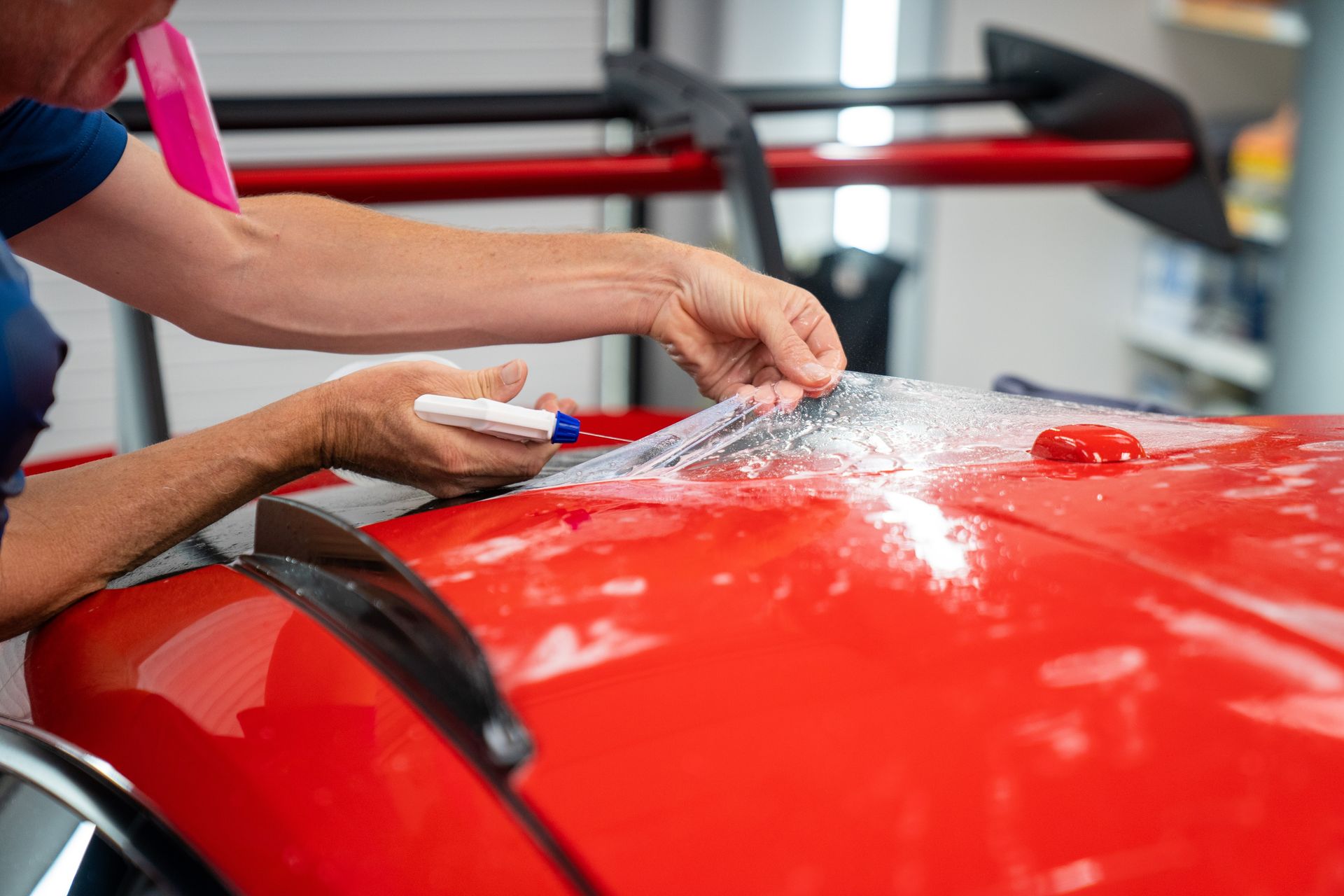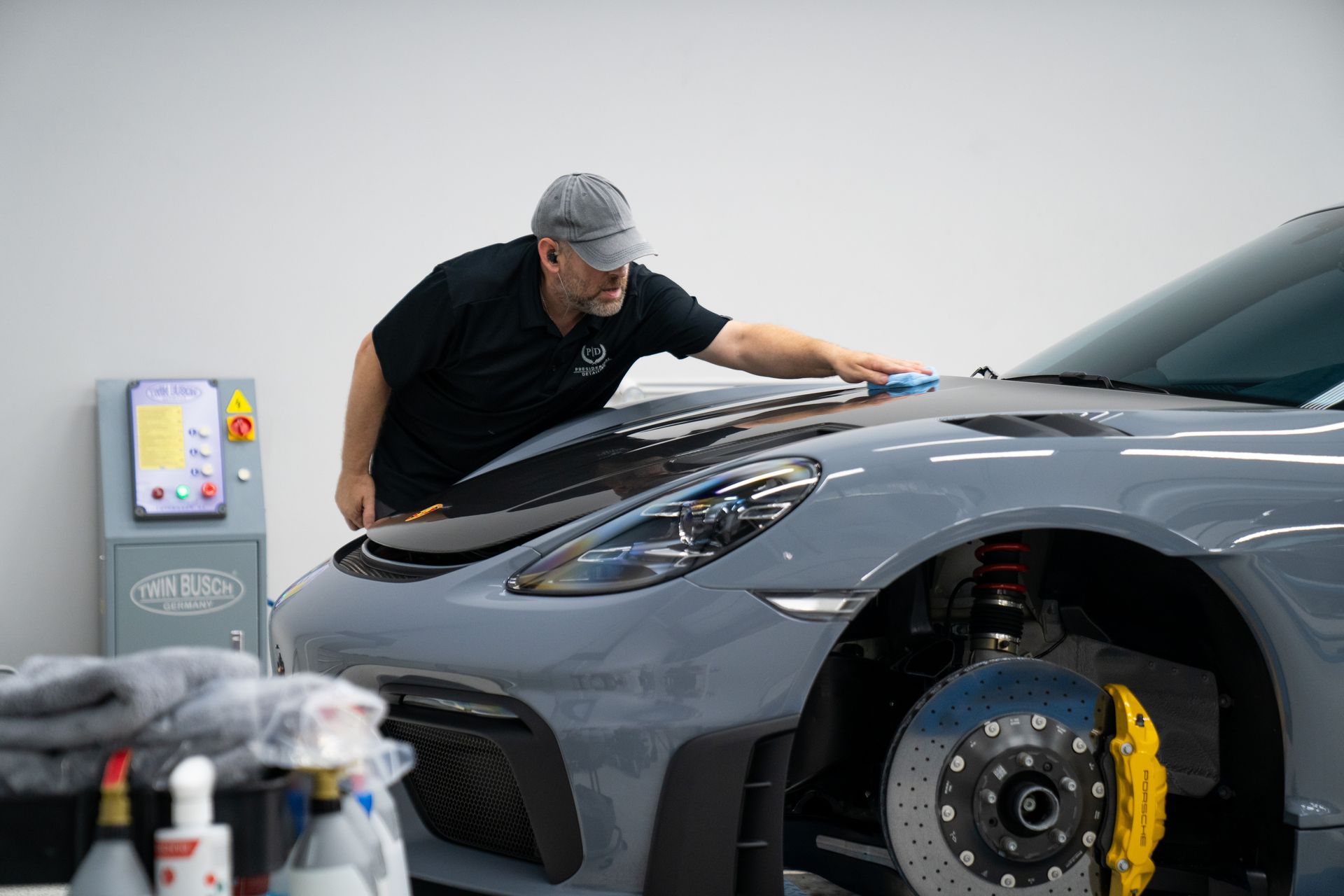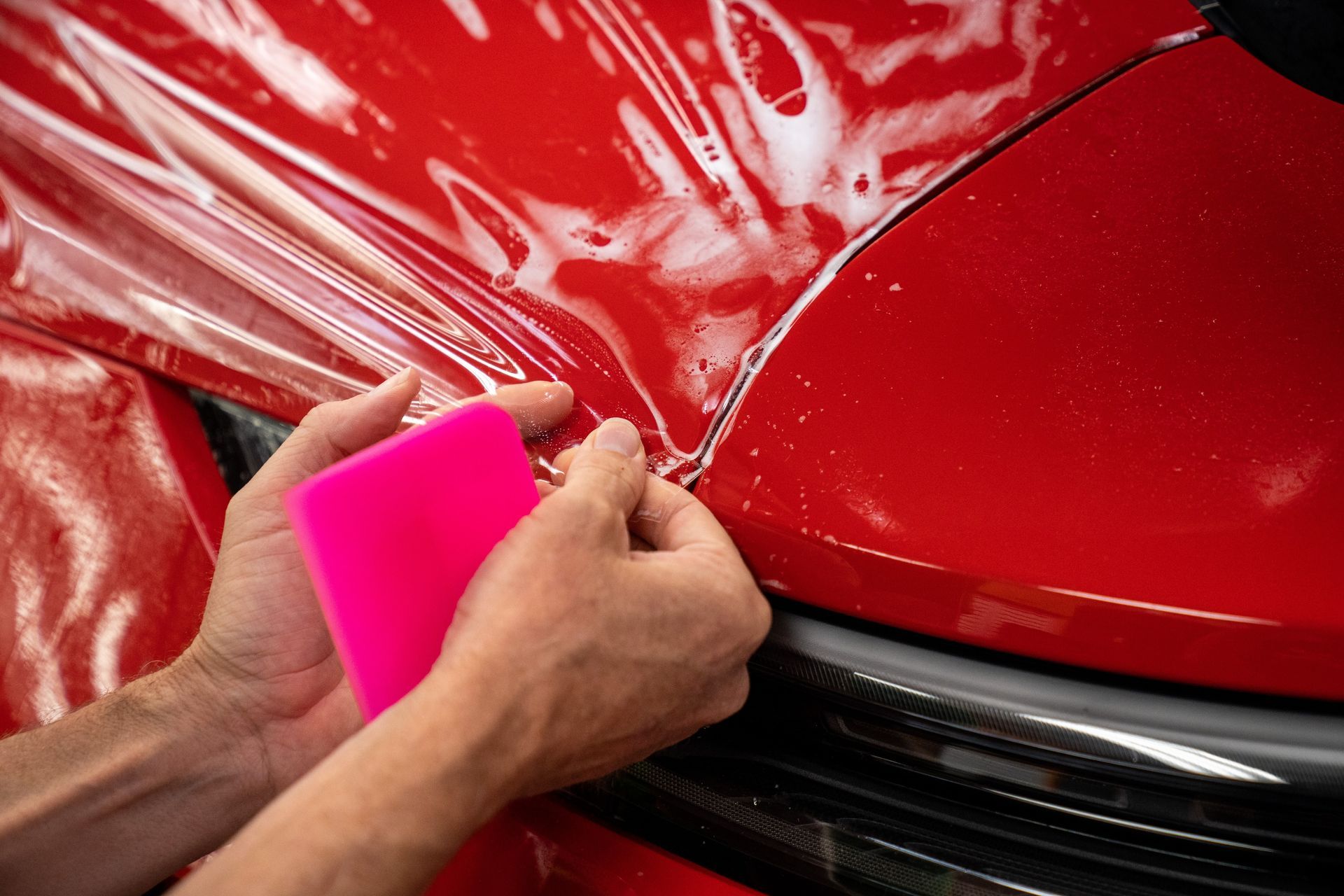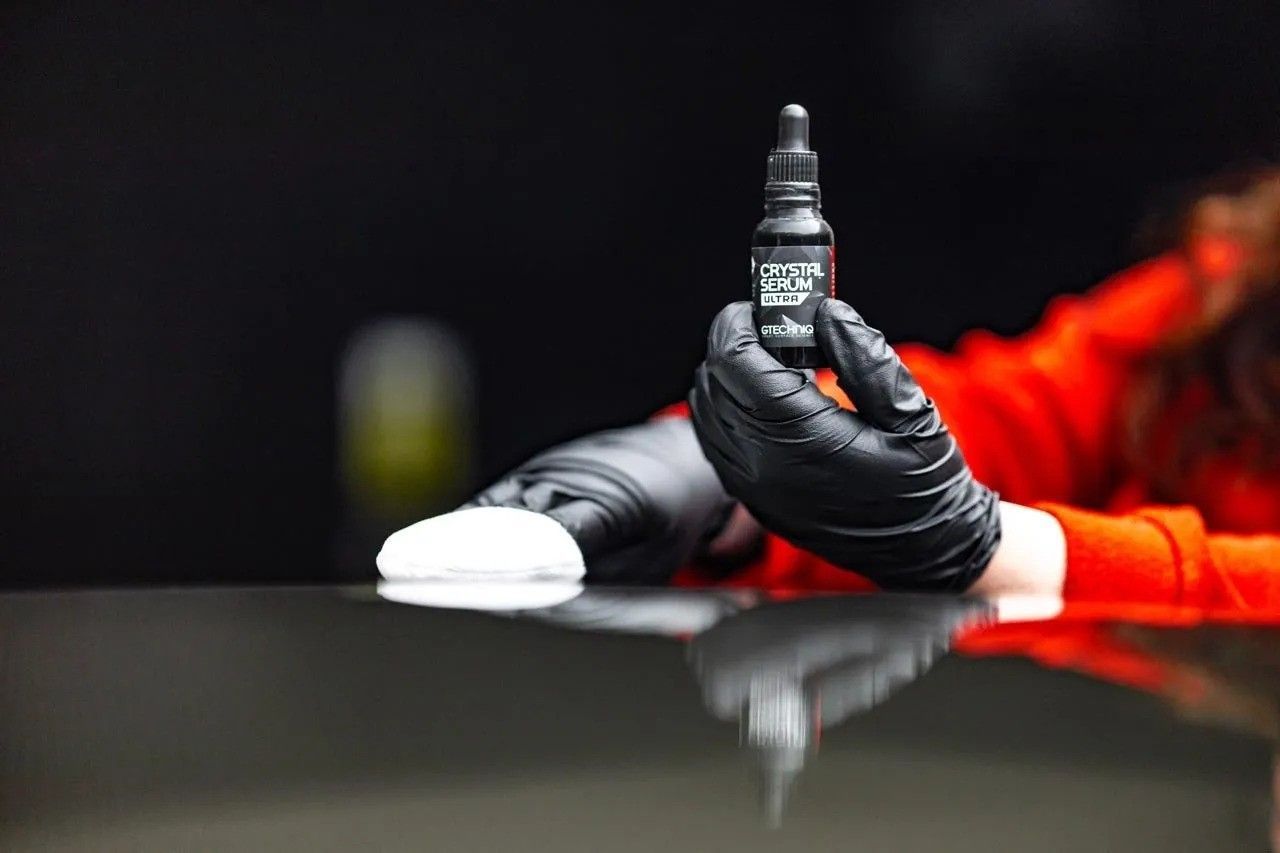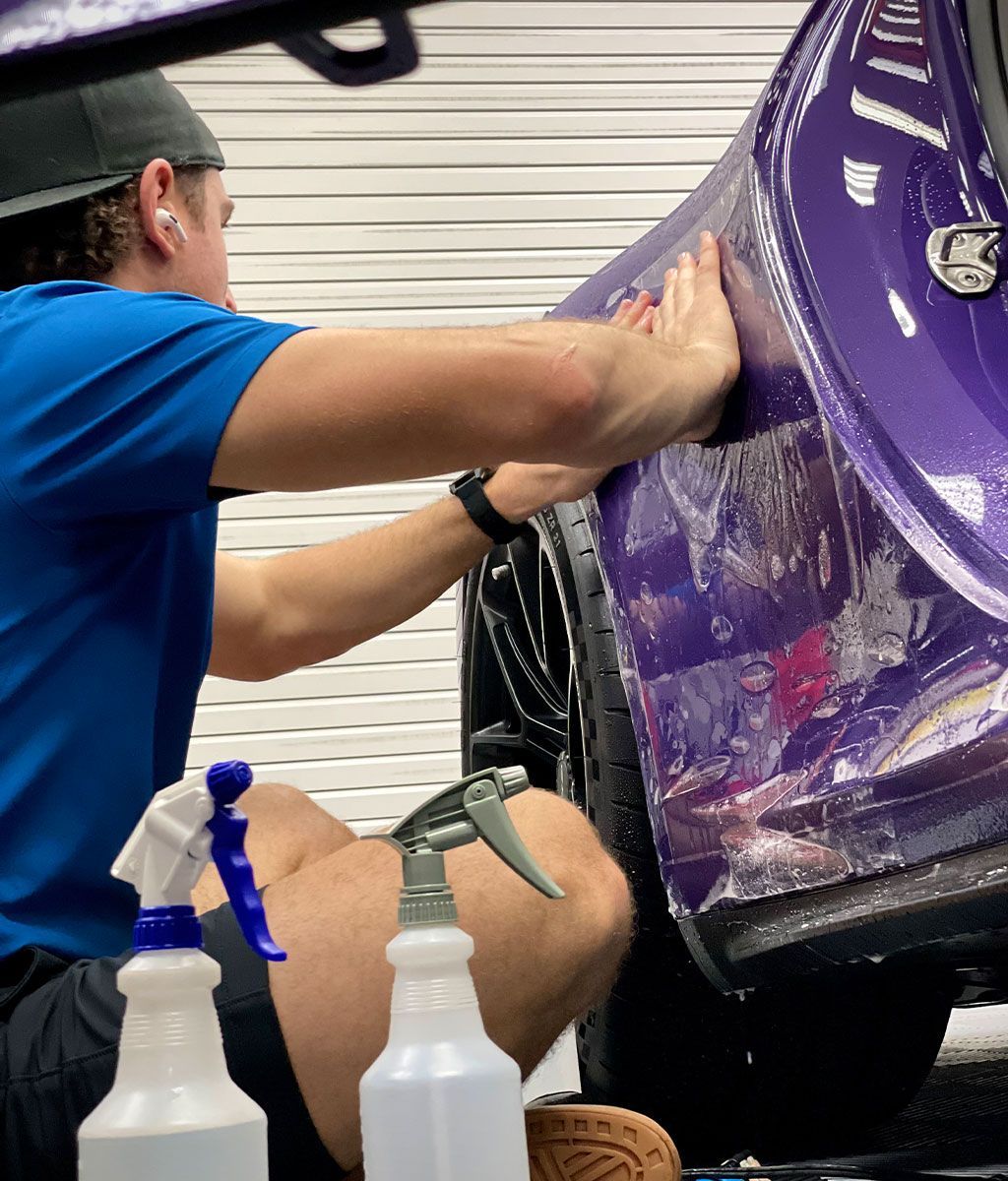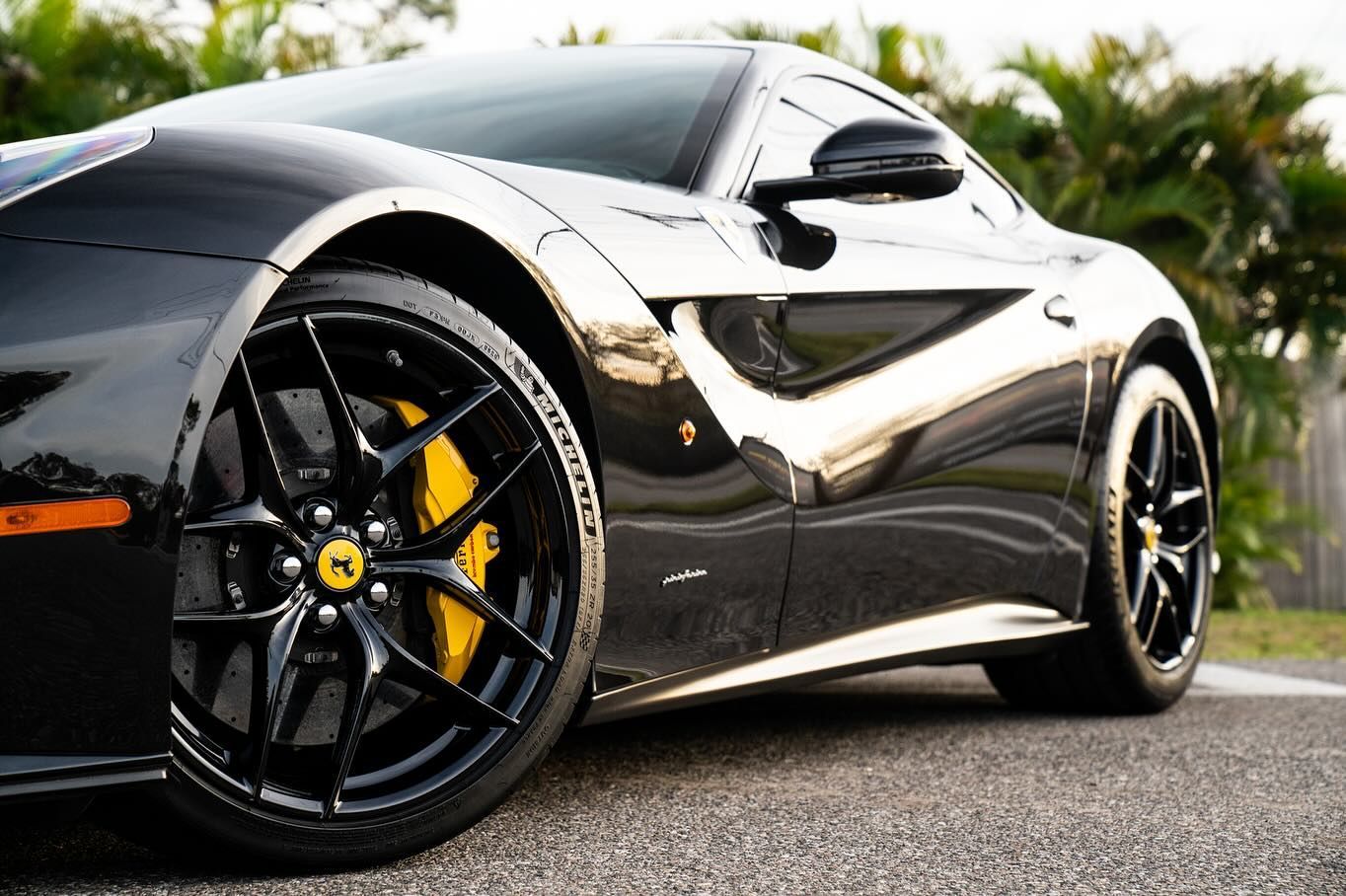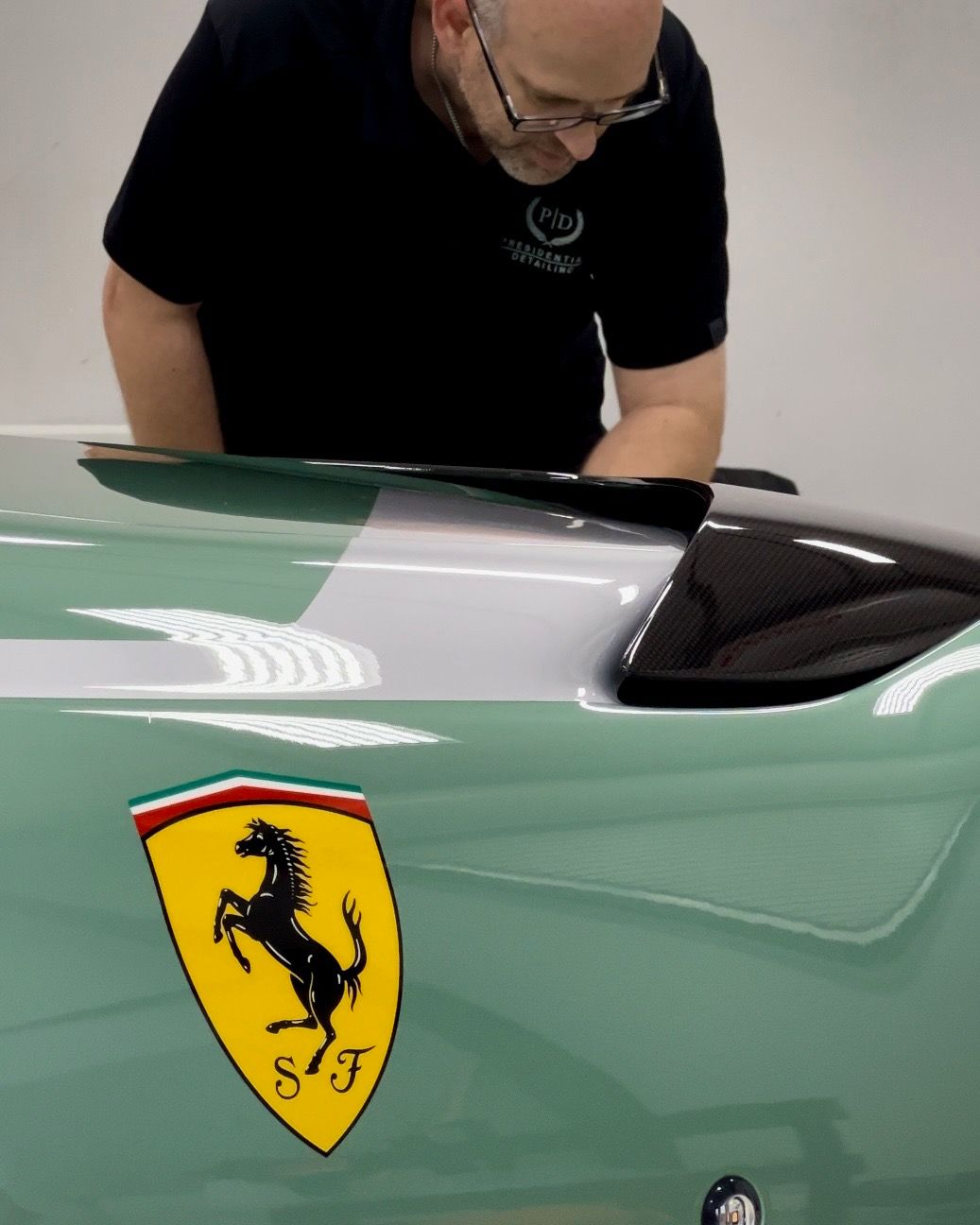The Lifespan of Ceramic Coating: When to Reapply for Maximum Protection
CALL (813) 723-9679
GET A FREE ESTIMATECeramic coating, your car's tough shield, generally lasts between 2 and 5 years. Regular upkeep pushes this boundary further, making your investment last longer. Strangely enough, the duration can soar to a stellar 7 years with top-grade options. It's about playing the long game with your car's paint protection.
It is generally recommended to reapply ceramic coating every 2 to 5 years, depending on the quality of the coating and the level of exposure to environmental elements. Signs that may indicate the need for reapplication include reduced water beading, loss of gloss and shine, and increased susceptibility to stains and contaminants. Regular maintenance and proper care can also extend the lifespan of ceramic coatings beyond the average range.
The Lifespan of Ceramic Coating: A Practical Overview
When it comes to safeguarding your vehicle's paint, ceramic coatings act like superheroes battling environmental elements. They can last a good 2 to 5 years on average, protecting your car's paint from UV rays, environmental contaminants, and the everyday impact of dirt and grime. However, with proper care and attention, their protective shield can last even longer.
One critical factor impacting the durability of ceramic coatings is quality. High-quality ceramic coatings are crafted for longevity and durability, whereas inferior coatings degrade more rapidly. Therefore, opting for a high-quality option from reputable manufacturers can significantly extend the lifespan of your ceramic coating. Proper maintenance plays a crucial role in extending the life of your ceramic coating. Regular washing using appropriate techniques and products, as well as avoiding harsh chemicals and abrasive cleaning methods, can help maintain the protective layer more effectively.
Environmental factors, such as intense sunlight, extreme temperatures, and harsh weather conditions, can gradually degrade the coating. Still, high-quality ceramic coatings are formulated to withstand these elements to a great extent. Driving conditions also matter—frequent exposure to gravel, debris, road salt, and automatic car washes with abrasive brushes can diminish the coating's lifespan. For instance, if you notice that water no longer beads up on your car's surface but instead forms a thin film or dissipates quickly, it might mean that the hydrophobic properties of the coating have diminished. Likewise, if your car no longer has that lustrous shine after washing it or has become more prone to accumulating dirt and grime, these are signs that the protective layer may need refreshing.
This level of awareness about your coating enables you to take proactive steps when needed—for instance, seeking professional assistance for optimal results when applying ceramic coating yourself or discussing reapplication with experienced detailers. Understanding these practical aspects will help you make informed decisions about reapplying ceramic coating for prolonged protection and maintaining your vehicle's aesthetic appeal.
THE INFLUENTIAL ROLE OF QUALITY ON CERAMIC COATINGS' DURABILITY
Imagine ceramic coatings as armor for your vehicle, serving as a shield against the elements, UV rays, and more. However, not all armor is created equal. The same principle applies to ceramic coatings, and the quality of the coating material plays a significant role in determining its lifespan and effectiveness in protecting your vehicle's paintwork.
High-quality ceramic coatings are engineered with advanced formulations and enhanced chemical structures that make them more durable and longer-lasting. These premium coatings are designed to provide superior protection for an extended period, often lasting between 3 and 7 years. Warranties give vehicle owners who want long-term paint protection even more assurance about their durability. In contrast, inferior or lower-quality ceramic coatings lack the robust composition and innovative technology found in premium options. As a result, their durability and longevity are compromised, leading to shorter lifespans and reduced performance in shielding the vehicle's surface from environmental hazards.
For instance, consumer-level ceramic coatings usually last between 1 and 2 years, highlighting the disparity in durability based on quality. This variance underscores the importance of investing in high-quality ceramic coatings that offer extended protection and reliability, ultimately proving to be a prudent investment for vehicle owners concerned with maintaining their vehicle's pristine appearance over an extended period of time. Consider high-quality ceramic coatings as fortified guardians for your vehicle's paint finish, equipped with cutting-edge defenses against wear and tear, while lower-quality alternatives may resemble weaker shields that struggle to withstand the test of time and environmental aggressors.
The influence of quality on ceramic coatings' durability cannot be overstated—an informed investment in premium products can significantly impact the long-term protection and aesthetics of your vehicle, providing peace of mind and value that extends far beyond mere surface enhancement. Understanding the pivotal role of quality in ceramic coatings' durability lays the groundwork for exploring how environmental factors interact with these protective layers.
Environmental Factors That Affect Ceramic Coating Longevity
When considering protecting your vehicle with a ceramic coating, it's crucial to account for the various environmental factors constantly at play. These elements, such as intense sunlight, extreme temperatures, and heavy precipitation, can strain any protective covering. However, high-quality ceramic coatings are engineered to withstand these challenges and maintain long-term benefits for your vehicle's paint.
Let's delve deeper into this. Intense sunlight can have an adverse effect on any protective layer; UV rays relentlessly beat down, causing colors to fade and surfaces to deteriorate over time. Hence, it's essential to ensure that the ceramic coating can endure prolonged sun exposure without breaking down. Similarly, extreme temperatures pose a challenge for most protective coatings—from blistering summer heat to freezing cold winters, a high-quality ceramic coating must remain robust and stable across a wide temperature range to provide consistent protection.
Impact of Environmental Factors
Heavy rain and snowfall can also impact the durability of a ceramic coating. Excessive moisture and water exposure can gradually break down any protective layer over time. This necessitates a well-formulated ceramic coating to possess strong hydrophobic properties, repelling water and preventing it from seeping into the paint underneath. Moreover, air pollution levels are another critical consideration. High pollution areas mean more contaminants in the air settling onto your vehicle's exterior. A robust ceramic coating should be resistant to these pollutants and prevent them from damaging your car's finish. In areas with high air pollution levels—such as major cities or industrial zones—an effective ceramic coating should act as a shield against pollutants like chemicals, soot, and other harmful particles that could affect your vehicle's appearance and integrity.
Understanding how environmental elements affect ceramic coatings underscores the importance of investing in high-quality products engineered to counteract these challenges. It's always wise to consider these factors when choosing a ceramic coating for your vehicle, as they directly impact its longevity and overall performance.
IMPACT OF DAMAGING ELEMENTS ON CERAMIC COATING
Imagine your car as your prized possession, gleaming under the sunlight. Road salt, gravel thrown up by tires, and automatic car washes with abrasive brushes can all reduce that shine. These seemingly minor elements can slowly erode the protective coating on your car. Gravel and debris from the road impact your car at high speeds, causing small scratches and chips in the ceramic coating. Over time, these accumulate and gradually compromise the protective layer. The repeated onslaught of these particles may cause damage akin to sandpaper rubbing against a surface over time. Similarly, automatic car washes, while convenient, often employ harsh chemicals and abrasive brushes that peel off the ceramic coating layer by layer. It's like using rough sandpaper to strip layers of paint.
But how can one minimize exposure to these damaging elements? For starters, avoiding automatic car washes with abrasive brushes and instead opting for hand washing or touchless car washes can substantially reduce exposure. Additionally, installing mud flaps helps mitigate the impact of debris and gravel. These simple precautions can go a long way toward safeguarding your ceramic coating. If we envision our ceramic coating as an invisible shield that keeps our car safe from harm, steering clear of such damaging elements is crucial to maintaining this shield intact for as long as possible. Much like taking steps to protect oneself from harmful sunlight or rough weather, preventative measures for our cars can help uphold their protective layers.
Every small chip and scratch might appear inconsequential at first, but collectively, they degrade the protective layer on your vehicle. This underscores the significance of comprehending how these elements gradually corrode the coating’s effectiveness over time.
Vehicle Maintenance: A Key Factor in Ceramic Coating Lifespan
Imagine a suit of armor that protects your car's paint, shielding it from the elements. That's what a ceramic coating does. But just like armor, it needs care to stay strong and protective. Your vehicle encounters all kinds of challenges, like sun exposure, rain, dust, road salt, and more. All these factors can wear down the ceramic coating over time, making it less effective.
Here's where proper vehicle maintenance comes in. Routine washing with appropriate techniques and products keeps your car clean without being too harsh on the ceramic coating. By avoiding harsh chemicals and abrasive cleaning methods, you ensure that the coating remains intact and effective for longer. For example, using a gentle car shampoo and microfiber wash mitts during your car wash routine can prevent unnecessary wear on the coating while still keeping your vehicle looking pristine. Seeking professional assistance from experts like Presidential Automotive Detailing for optimal application ensures that the ceramic coating is applied correctly and effectively from the start.
Incorporating these best practices into your regular vehicle maintenance routine can significantly extend the durability of ceramic coatings. It's like giving that suit of armor regular polishing and upkeep to keep it ready for battle. With these simple yet essential steps incorporated into your regular vehicle maintenance routine, your ceramic coating will remain resilient against the harshest elements, prolonging the lifespan of both your coating and your vehicle's pristine appearance.
Detecting the Need for Ceramic Coating Reapplication
As a car owner, it's crucial to monitor the signs that indicate your ceramic coating may need reapplication. Reduced water beading and hydrophobicity, loss of gloss and shine, increased susceptibility to stains and contaminants, and diminished protection against environmental hazards all indicate that your ceramic coating is no longer providing the necessary protection.
Imagine noticing that water no longer beads up on your car's surface as it once did after a rain shower. Instead, it spreads out in large puddles. This signifies a compromised hydrophobic nature of the coating, leading to increased dirt buildup and water spots on your vehicle. Similarly, if you notice that your car's paint has lost its luster and shine, it could indicate that the ceramic coating has deteriorated and is no longer offering the aesthetic enhancement it once did. This loss of gloss can not only make your car look dull but also signifies a reduction in the protective properties of the coating.
Moreover, an increase in susceptibility to stains suggests that the ceramic coating is no longer effectively repelling environmental pollutants or road grime. This can result in stubborn stains that are harder to remove, ultimately impacting the aesthetics of your vehicle. Understanding when to reapply ceramic coating is vital for maintaining the aesthetics and protection of your vehicle. Being attentive to these signs can save you from potential long-term damage.
Experience Unrivaled Ceramic Coating Service in Tampa, FL
Discover the ultimate solution for long-lasting protection and stunning shine with Presidential Automotive Detailing, the premier destination for
unrivaled ceramic coating service in Tampa, FL. Our team is dedicated to providing your vehicle with the highest level of care and protection, utilizing cutting-edge ceramic coating technology to shield your car's exterior from the elements and maintain its showroom-worthy appearance. Say goodbye to frequent waxing and polishing; our ceramic coating offers unmatched durability and resistance to scratches, stains, and UV damage. Schedule your ceramic coating service today or call us at
(813) 723-9679 and ensure your vehicle stands out on the road for all the right reasons!
